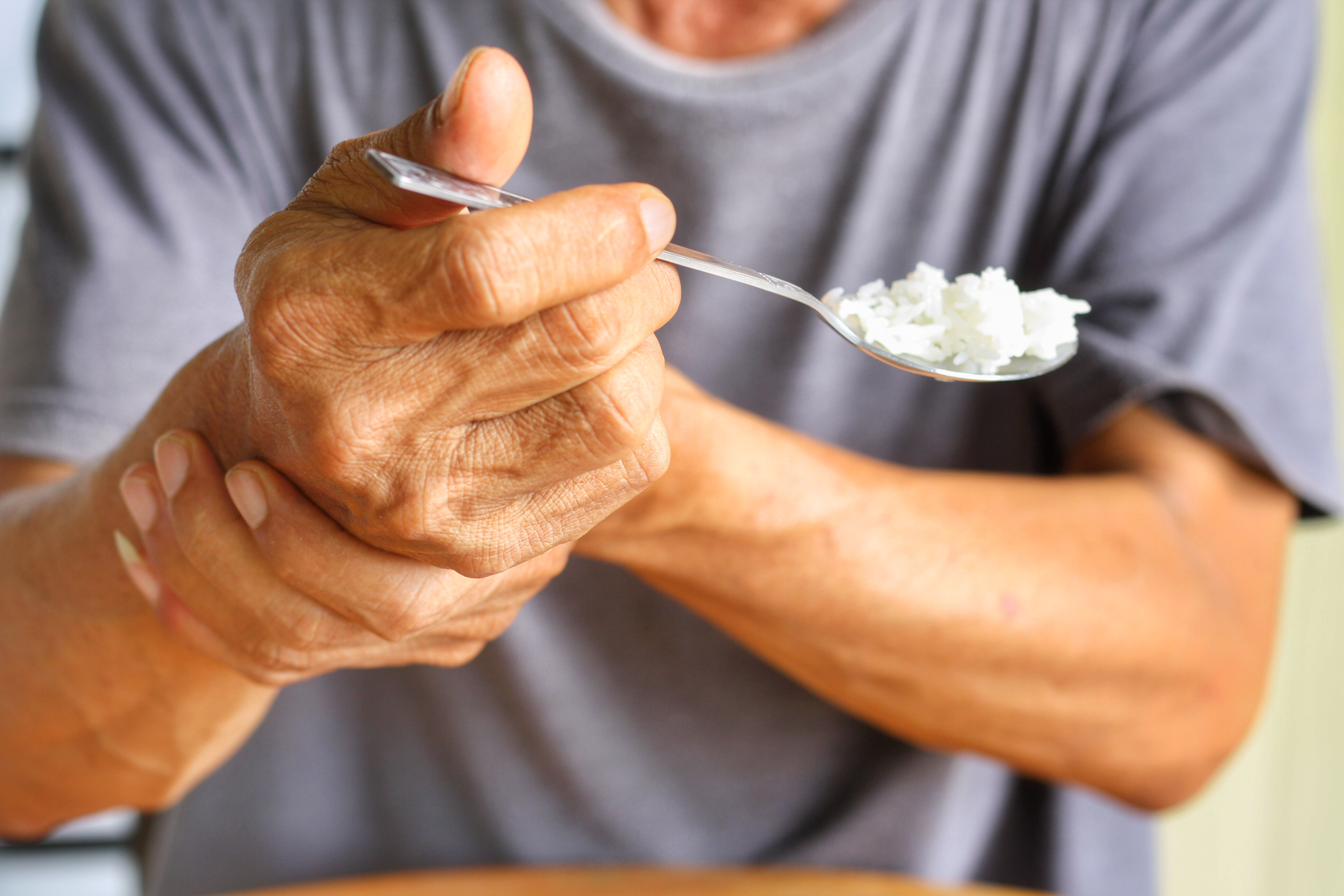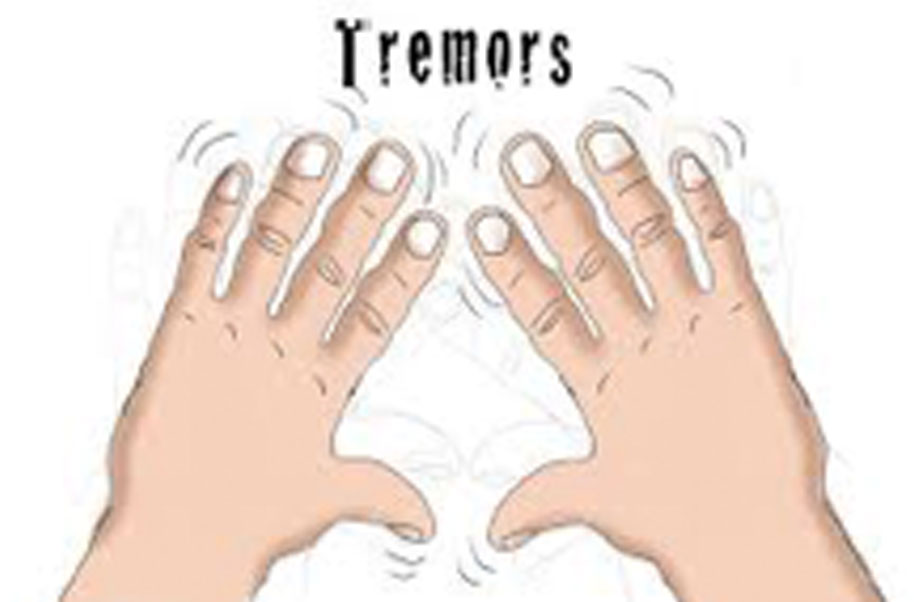
Irregular, high oscillations when arms and hands are extended.Other metabolic disorders (e.g., kidney failure and azotemia, respiratory failure and hypercapnia ).Metabolic encephalopathy (especially alcohol-induced hepatic encephalopathy).Electromyography of the legs while the patient is standing detection of 13–18 Hz tremor.Clinical diagnosis: Synchronized shaking of the legs may be seen or felt by the examiner.Subjective feeling of unstable balance, and falling over.Clinical features: associated with long periods of standing.Propranolol may be considered under certain conditions.Usually reversible once the underlying cause is treated.Diagnostics: depends on the suspected underlying cause ( thyroid function tests, blood glucose level, review of medications, history of substance use).Occurs while holding a position against gravity (e.g., extending arms in front of the body).Usually a fine bilateral postural tremor in the hands and fingers ( ∼ 10 Hz ).Other: magnesium deficiency, hypoglycemia, Wilson disease.Medical conditions: hyperthyroidism or pheochromocytoma, Lewy body dementia.Withdrawal: alcohol, benzodiazepines, barbiturates, marijuana.Drug-induced : valproate, lithium, SSRIs, tricyclic antidepressants, beta-2 agonists, levothyroxine, immunosuppressants (e.g., daclizumab, basiliximab ).Intoxication: mercury poisoning, caffeine, alcohol.The tremors are increased by sympathetic stimulation:.


Other anticonvulsants (e.g., gabapentin, topiramate ) including certain benzodiazepines (e.g., alprazolam, clonazepam )Ĭonsider an essential tremor in a patient presenting with chronic bilateral hand tremors without further neurological deficits and positive family history.Other beta blockers (e.g., atenolol, sotalol ).Alternatives (if propranolol and primidone are unresponsive or contraindicated).Drugs of choice: propranolol or primidone.


They characteristically improve with alcohol consumption. Essential tremors are the most common type of tremor and usually involve the hands and head. Postural tremors are usually essential or physiologic. Resting tremors typically occur in patients with Parkinson disease and usually present as asymmetrical tremors that occur during rest. Tremors are classified as resting or action tremor (i.e., postural and intention tremors). Tremors are the most common movement disorder and are defined as rhythmic, involuntary movements of one or more parts of the body.


 0 kommentar(er)
0 kommentar(er)
